 |
To analyze the effect of the presence of passengers on accident prevention, the number of primary parties is divided by the number of secondary parties in rear-end collisions B, classified by daytime/nighttime and driver gender and age, as shown in Fig. 3 (hereinafter "elative accident rate"). Looking at age groups, the relative accident rate is lowest in the age group 35-44, higher in the younger age groups, and highest in the eldest group, regardless of gender and time of day. The rate rises sharply particularly between the age group 65-74 and the group over 75. Focusing on the number of passengers, the relative accident rate is lower in all age groups when driving with one or more passengers.
|
|
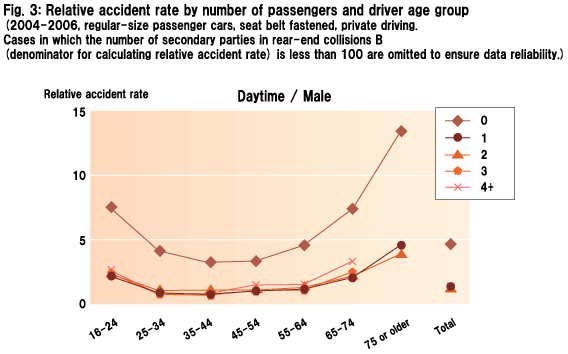
|
|
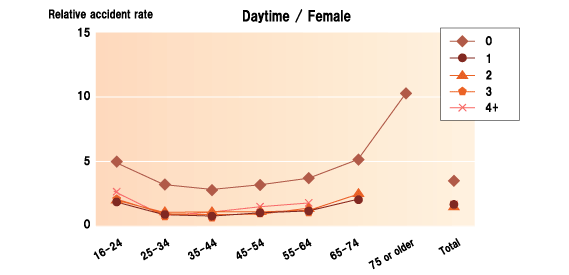
|
|
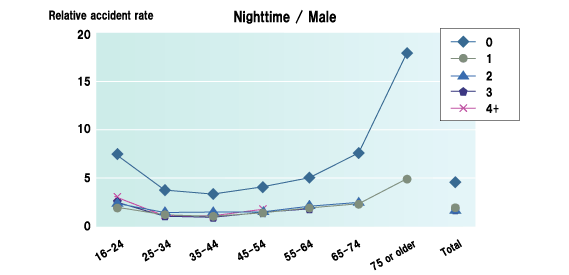
|
|
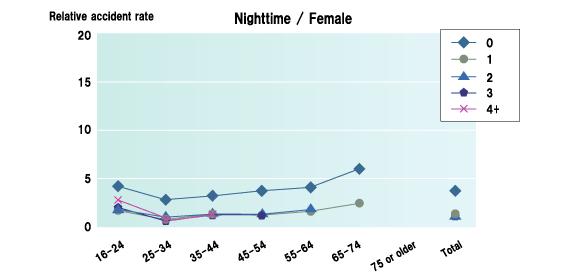
|
|
Figure 4 illustrates the same data as used in Fig. 3 by the number of passengers. From this, we can easily understand the effect of the presence of passengers lowering the relative accident rate by more than half, regardless of gender and time of day. Note that, unlike the Swedish research study mentioned earlier (i.e., greater preventive effect is expected with the increase in the number of passengers), the rate is almost the same or increases only slightly when driving with two or more passengers.
|
|
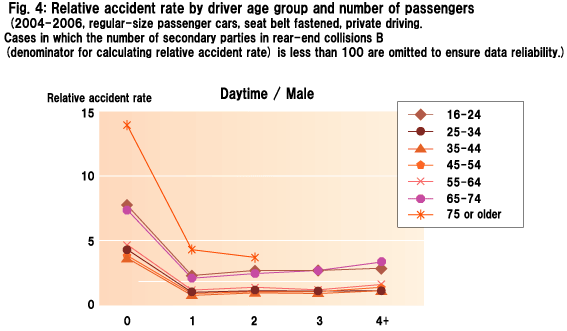
|
|
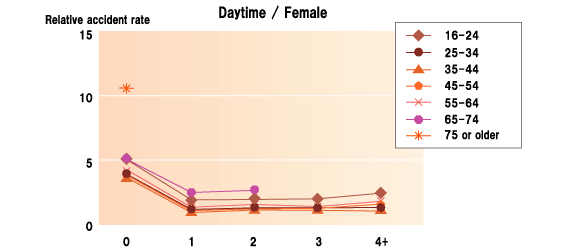
|
|
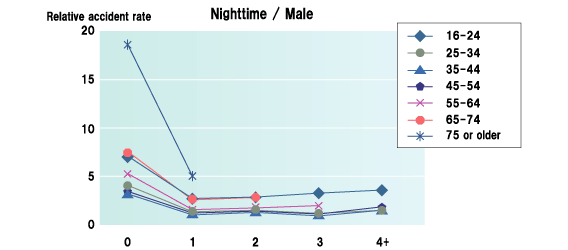
|
|
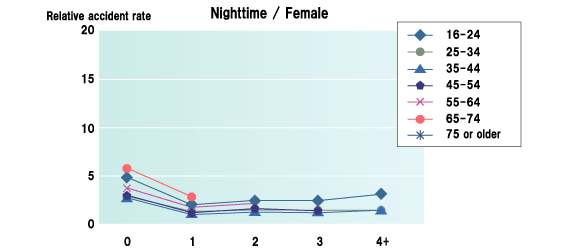
|
|
For the purpose of quantitative analysis, the proportion of the relative accident rate with one passenger to that without any passengers (hereinafter "relative accident rate ratio") is shown in Fig. 5. A relative accident rate ratio of less than 1 means that the accident rate per chance of exposure to road traffic with one passenger decreases compared to that with no passengers. The ratio is less than 0.5 in all situations in Fig. 5, suggesting that the accident rates can be reduced by more than half with the presence of passengers.
|
|
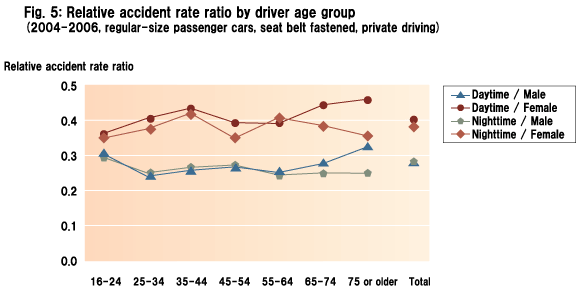
|
|
As for the difference between male/female, the fact that the relative accident rate ratio is lower for males than females indicates that the presence of passengers is more effective for males. Regarding the difference between daytime/nighttime, the presence of passengers is particularly effective at nighttime for those aged over 65. This is because passengers make up for weakened eyesight in elderly drivers, resulting in noticeably decreased accident rates at nighttime.
The reason for relatively little effect of the presence of passengers (i.e., high relative accident rates) on female drivers in the age group 35-44 is that, as shown in Table 1, these females are often driving with a child younger than 15 years old in the passenger seat who might not be able to give helpful support or contribute to the prevention of traffic accidents.
Note 2) Table 1 was prepared in order to find out the combinations and seating positions of the driver and passenger by gender and age in private driving in a regular-size passenger car when driving with one passenger, from among the cases of secondary parties in rear-end collisions B with one passenger who was killed or injured.
|
|
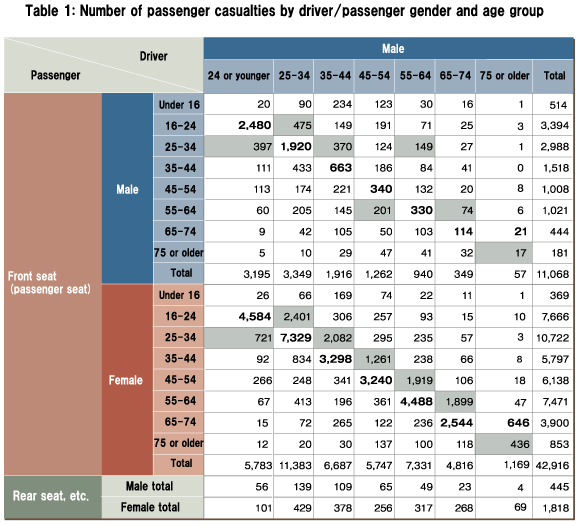
|
|
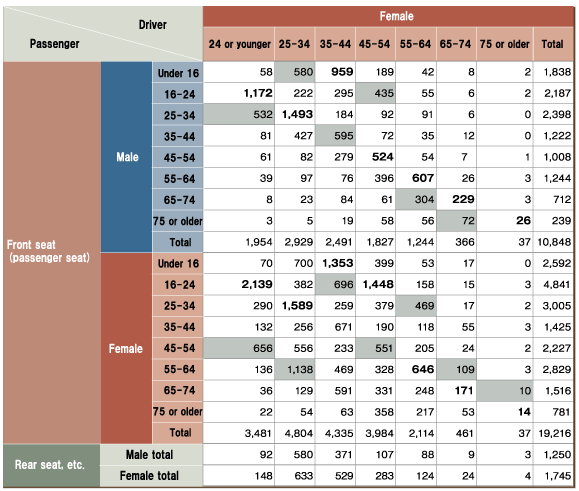
|
Statistical policy: Traffic accidents involving casualties in Japan in 2004-2006. Passengers killed or injured in a (stopped) car by a rear-end collision are compiled by driver (including those without injury) gender and age group. Limited to regular-size passenger cars to avoid possible variations in accident rate for each model. Accident rates differ according to situations such as the use of seat belt and the presence of passengers. Here, both driver and passenger are wearing their seatbelt and the number of passengers is one. Limited to private driving to avoid possible variations in the combination of passenger gender and age for other purposes.
Note: Figures in bold type represent the passenger age group in which the greatest number of passengers is recorded, and shaded cells represent the passenger age group in which the second greatest number of passengers is recorded, for each gender among a particular driver age group.
|
|
|
UP
Back Next
|
